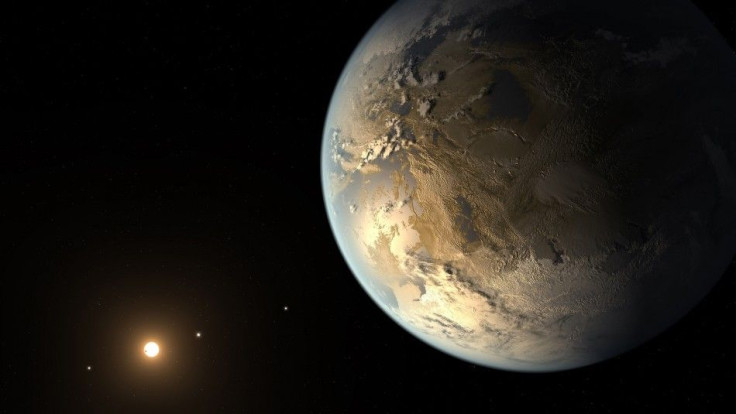Scientists Discover New Planet Forming Around Star About 335 Light Years From Earth
Scientists Say The Planet Would be Thrice the Size of Jupiter

A true spectacle, scientists have discovered a new planet forming around a star about 335 light years from Earth. Scientists say that they discovered this planet by chance; they came across this formation while studying the protoplanetary disk around a star known as HD 100546. They then saw the formation of the planet that was orbiting the star.
The team led by John Carr, a scientist at the U.S. Naval Research Laboratory (NRL), used a technique called spectro-astrometry to study the gases in this disk; the technique allows them to spot changes in the position of moving gasses. A protoplanetary disk is a circumstellar disk of dense gas that surrounds a newly formed star. The team found carbon monoxide emission that they said could not be explained by the protoplanetary disk alone. On examination, they found that it was orbiting a new star, HD 100546. But they also found that the distance of this gas from the star is more than that of Saturn from the sun. Carr therefore states that this is evidence that the gas is orbiting a young planet. He further explains that they are watching "the gas as it swirls around and onto the forming planet."
Dr. Sean Brittain, a Clemson University astrophysicist and the lead author on the paper, and the team observed this phenomenon and gathered additional data, confirming that this gas was a "small circumplanetary disk of hot gas orbiting a forming planet." They state that the planet would be humungous, about three times the mass of Jupiter. They state that a circumplanetary disk serves as a middle man between the large protoplanetary disk and the growing planet and serves as a mediator between the two. What would remain from the circumplanetary disk would result in the birth of moons. The detection of this circumplanetary disk is a new, "novel aspect of this new evidence for planet formation," said Carr.
The team used the Gemini Observatory and the Very Large Telescope at the European Southern Observatory, both located in Chile and collected high-resolution infrared spectrographs. The data made it possible for the researchers to measure the movement of the molecular gas surrounding the star. Their study is based on the observations made in 2003, 2006, 2010 and 2013. Carr said that the results provided a rare opportunity to "study planet formation in action."
He stated that the analysis points towards the formation of a giant planet in the star's orbit. Further explaining the functions of the circumplanetary disks, he said that they act as gateways controlling the flow of the gases and it surrounds the planets during the formation stages.
"These findings are the first observational evidence for their existence. If our interpretation is correct, we are essentially seeing a planet caught in the act of formation," said Carr. The observation and study will continue as the team seeks to gather additional details and data about the properties of the circumplanetary disk.
This research is publishedin The Astrophysical Journal.





















